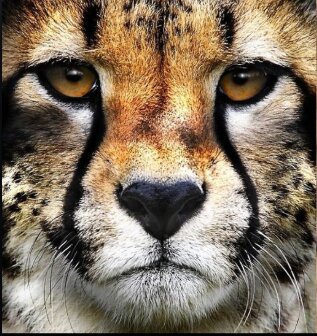Reintroduction of Cheetah
Why in News
Recently, the Union Minister for Environment, Forests and Climate Change has launched the ‘Action Plan for Introduction of Cheetah in India’ under which 50 of these big cats will be introduced in the next five years.
- The action plan was launched at the 19th meeting of the National Tiger Conservation Authority (NTCA).
- NTCA is a statutory body under the Ministry of Environment, Forests and Climate Change.
- Last year (2021), the Supreme Court lifted its seven-year-long stay on a proposal to introduce African Cheetahs from Namibia into the Indian habitat.
Key Points
- About:
- ‘Reintroduction’ of a species means releasing it in an area where it is capable of surviving.
- Reintroductions of large carnivores have increasingly been recognised as a strategy to conserve threatened species and restore ecosystem functions.
- The cheetah is the only large carnivore that has been eliminated, mainly by over-hunting in India in historical times.
- The conservation of the cheetah will revive grasslands and their biomes and habitat, much like Project Tiger has done for forests and all the species that have seen their numbers go up.
- Reasons for the Extinction:
- Hunting, diminishing habitat and non-availability of enough prey - black buck, gazelle and hare - led to the extinction of the cat in India (1952).
- The advent of climate change and growing human populations have only made these problems worse.
- Reintroduction Action Plan:
- With help from the Wildlife Institute of India and the Wildlife Trust of India, the ministry will be translocating around 8-12 cheetahs from South Africa, Namibia and Botswana.
- These countries have the world’s largest populations of the animal.
- The big cats will live at Kuno Palpur National Park (Madhya Pradesh) owing to its suitable habitat and adequate prey base.
- With help from the Wildlife Institute of India and the Wildlife Trust of India, the ministry will be translocating around 8-12 cheetahs from South Africa, Namibia and Botswana.
- Other Highlights of the NTCA Meeting:
- Water Atlas:
- A Water Atlas, mapping all the water bodies in the tiger-bearing areas of India has also been released.
- The atlas contains information about presence of such bodies in several areas, including the Shivalik Hills and Gangetic plain landscape, Central Indian Landscape and Eastern Ghats, Western Ghats landscape, North Eastern Hills and Brahmaputra flood plains and Sundarbans.
- The atlas has been put together using remote-sensing data and Geographic Information System (GIS) mapping.
- It will provide baseline information to forest managers to shape their future conservation strategies.
- Conservation Assured | Tiger Standards (CA|TS) Accreditation:
- Fourteen tiger reserves have been accredited under CA|TS, and NTCA is working on getting other reserves evaluated for CA|TS accreditation.
- CA|TS has been agreed upon as an accreditation tool by the global coalition of Tiger Range Countries (TRCs) and has been developed by tiger and protected area experts.
- Fourteen tiger reserves have been accredited under CA|TS, and NTCA is working on getting other reserves evaluated for CA|TS accreditation.
- Water Atlas:
Cheetah
- The cheetah is one of the oldest of the big cat species, with ancestors that can be traced back more than five million years to the Miocene era.
- The cheetah is also the world’s fastest land mammal that lives in Africa and Asia.
